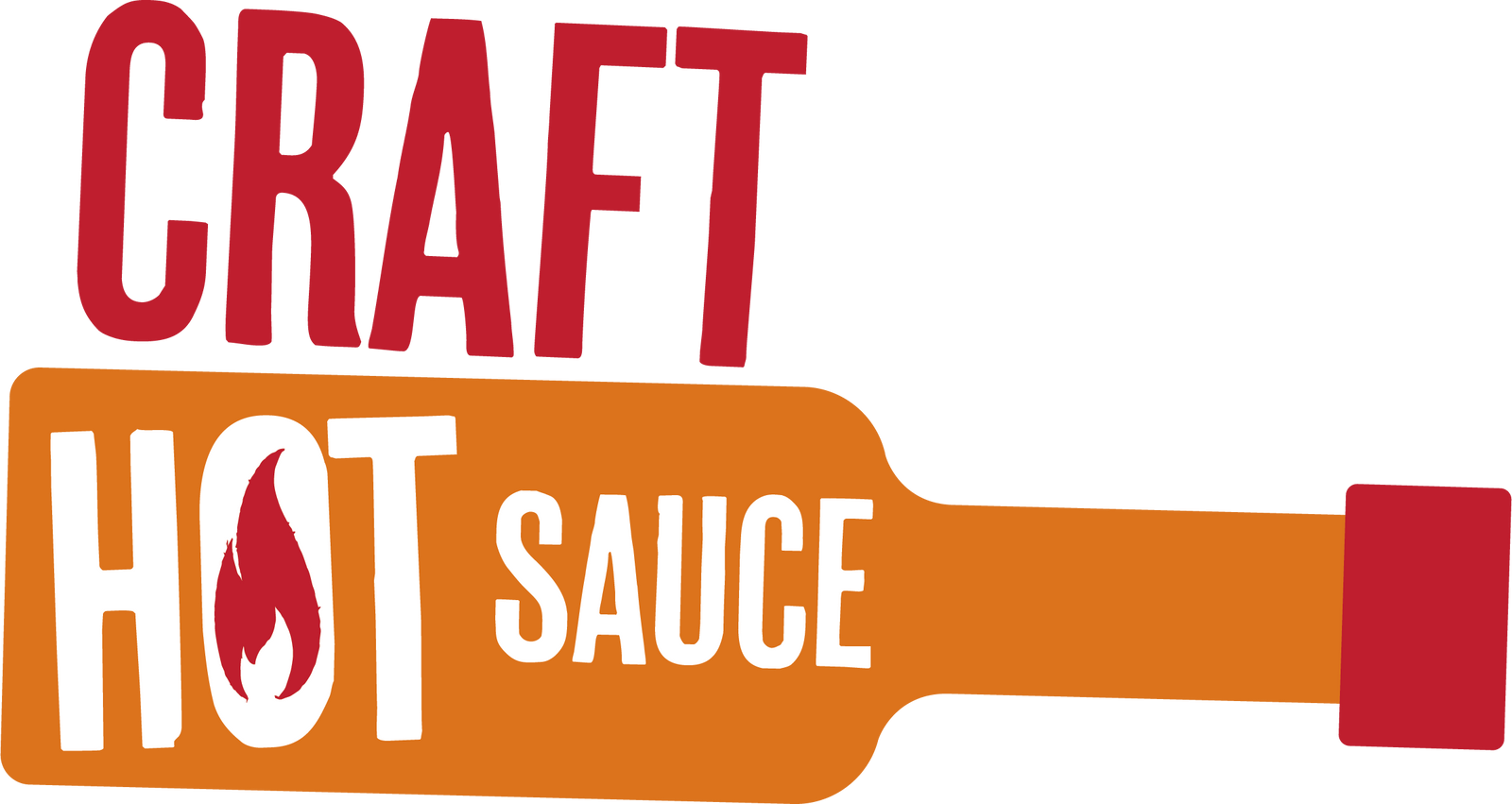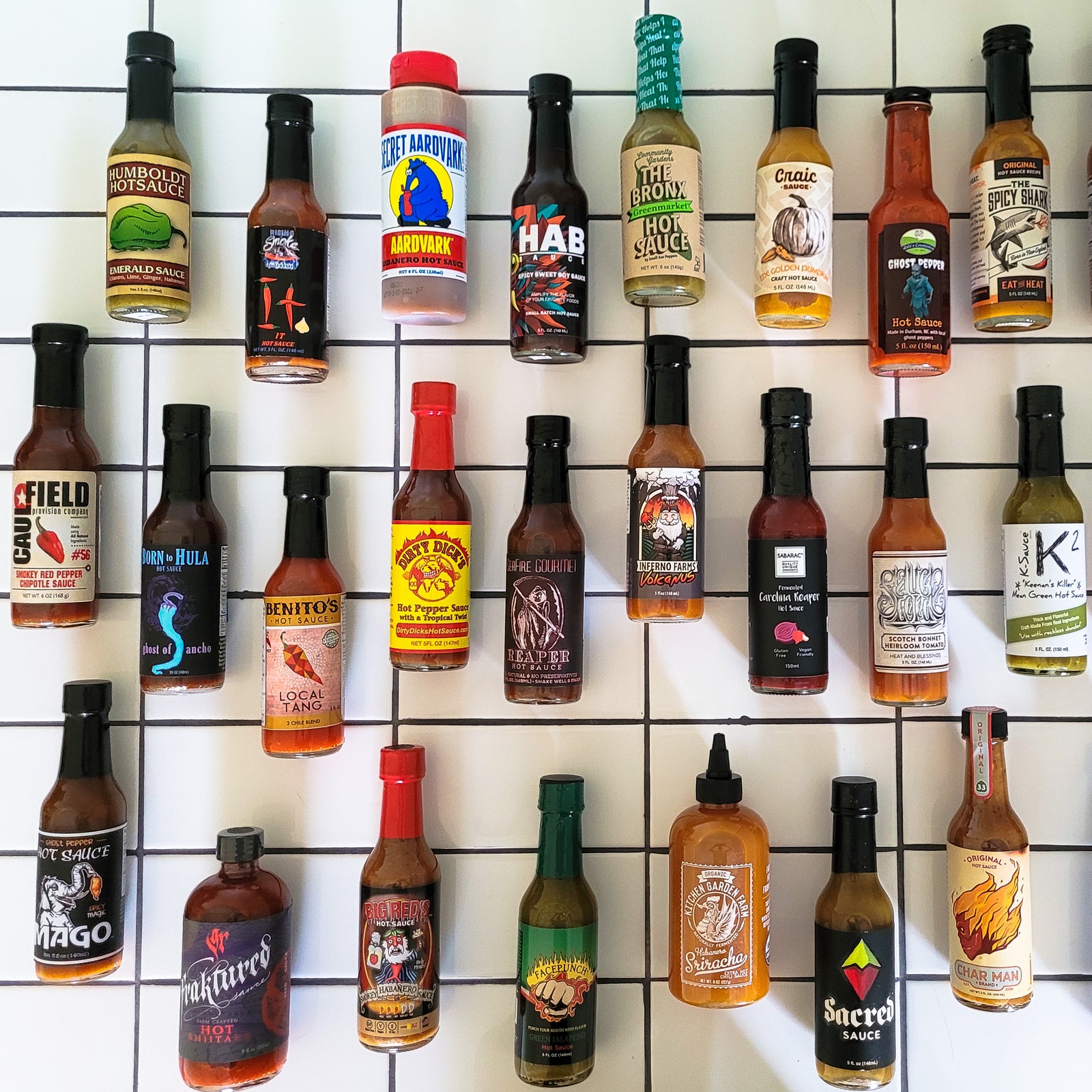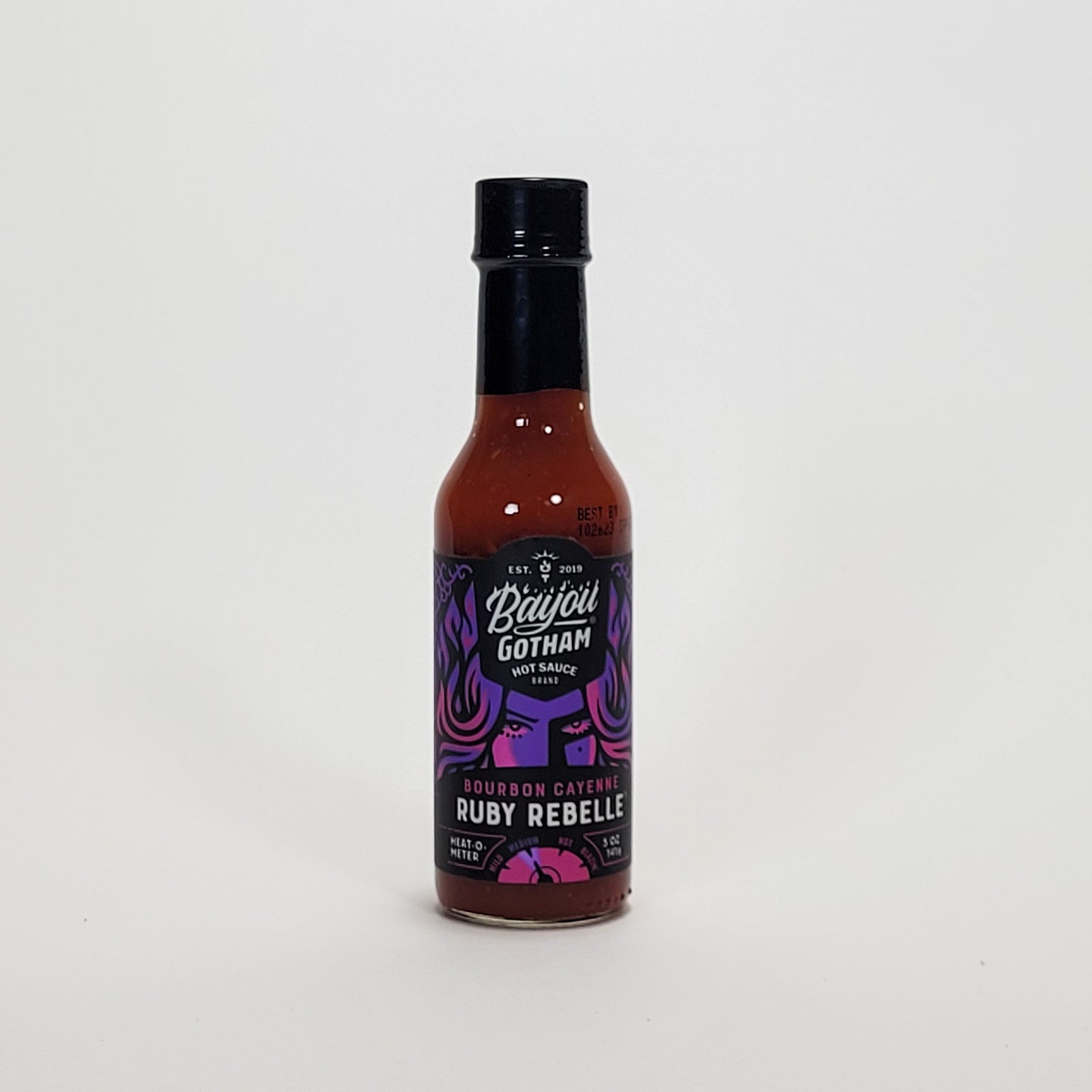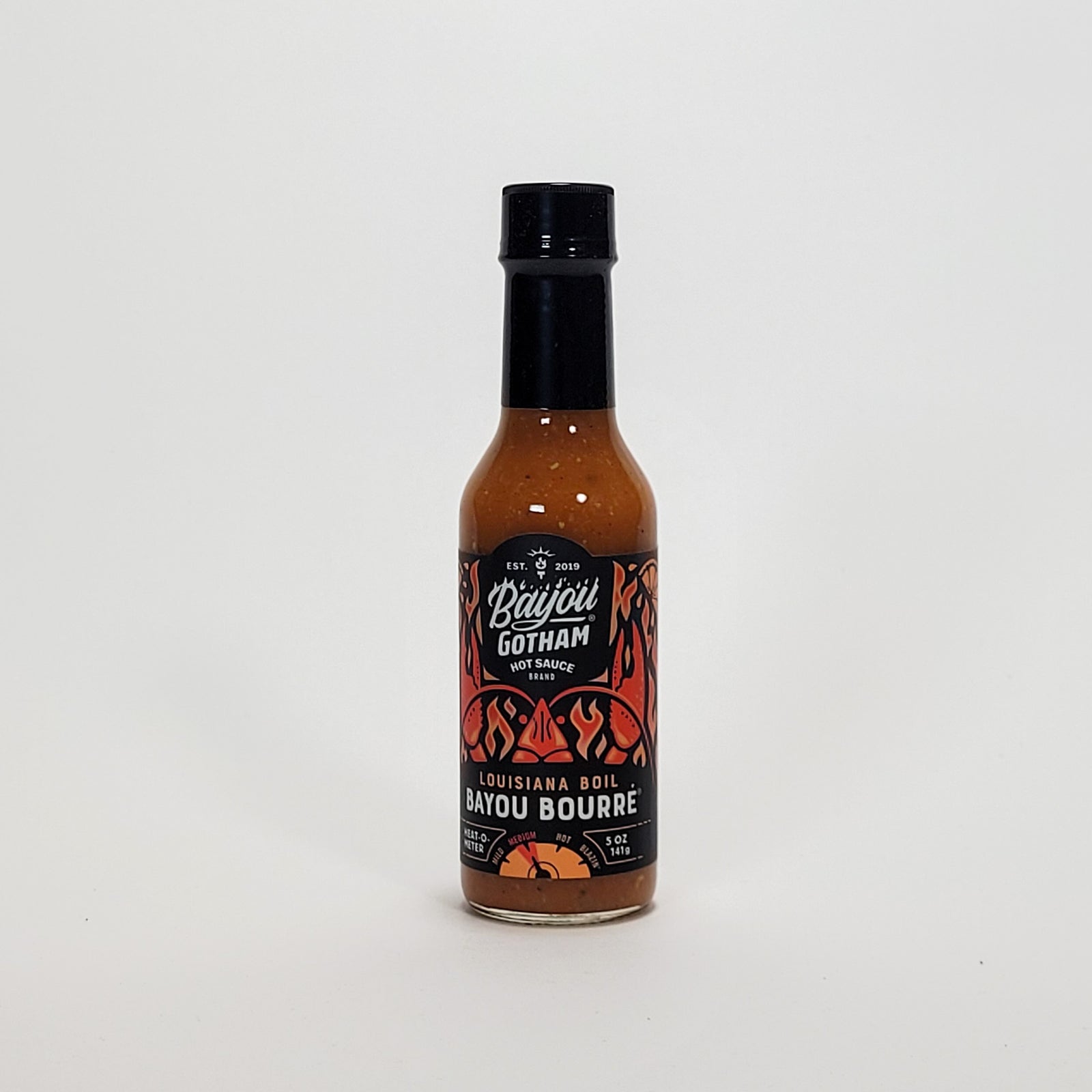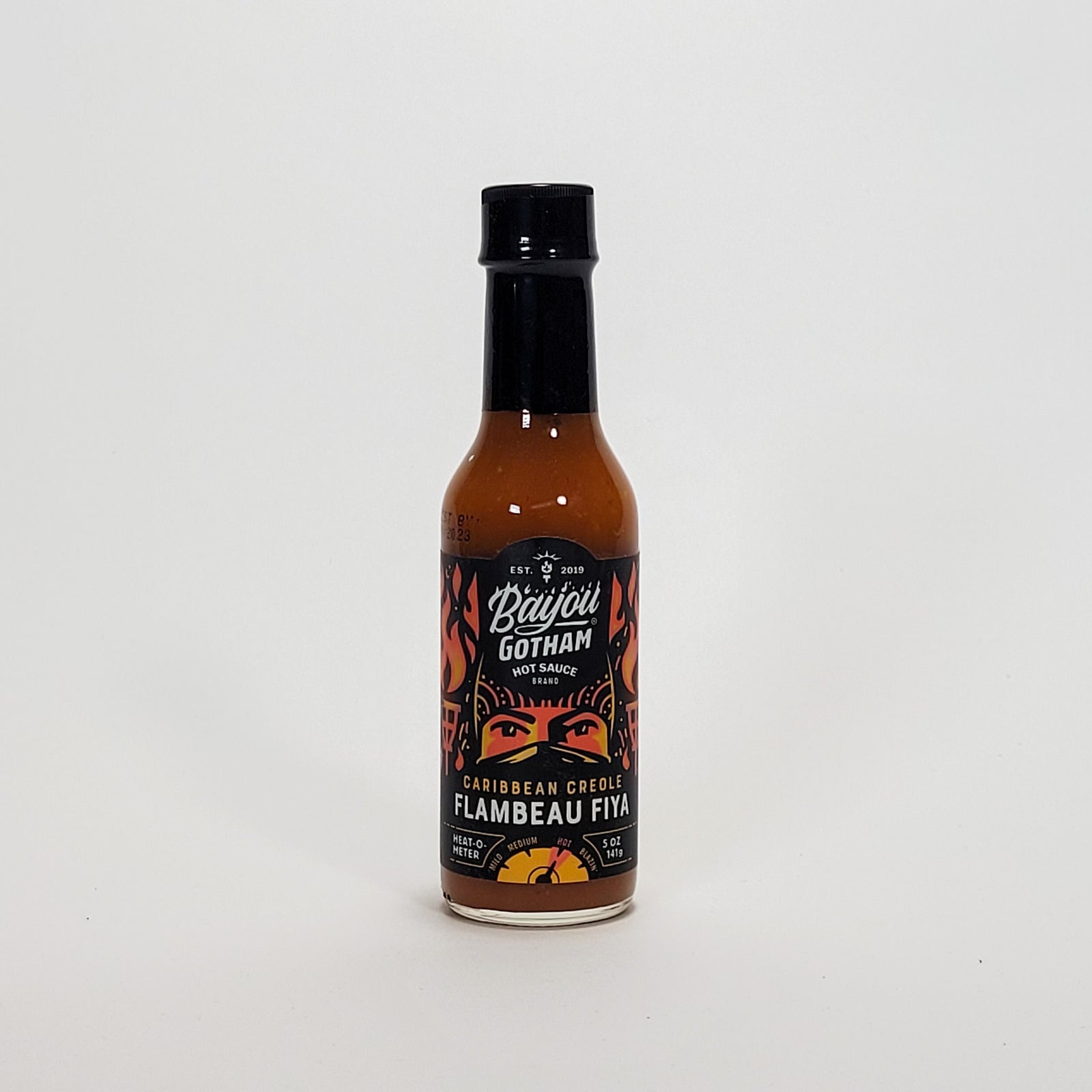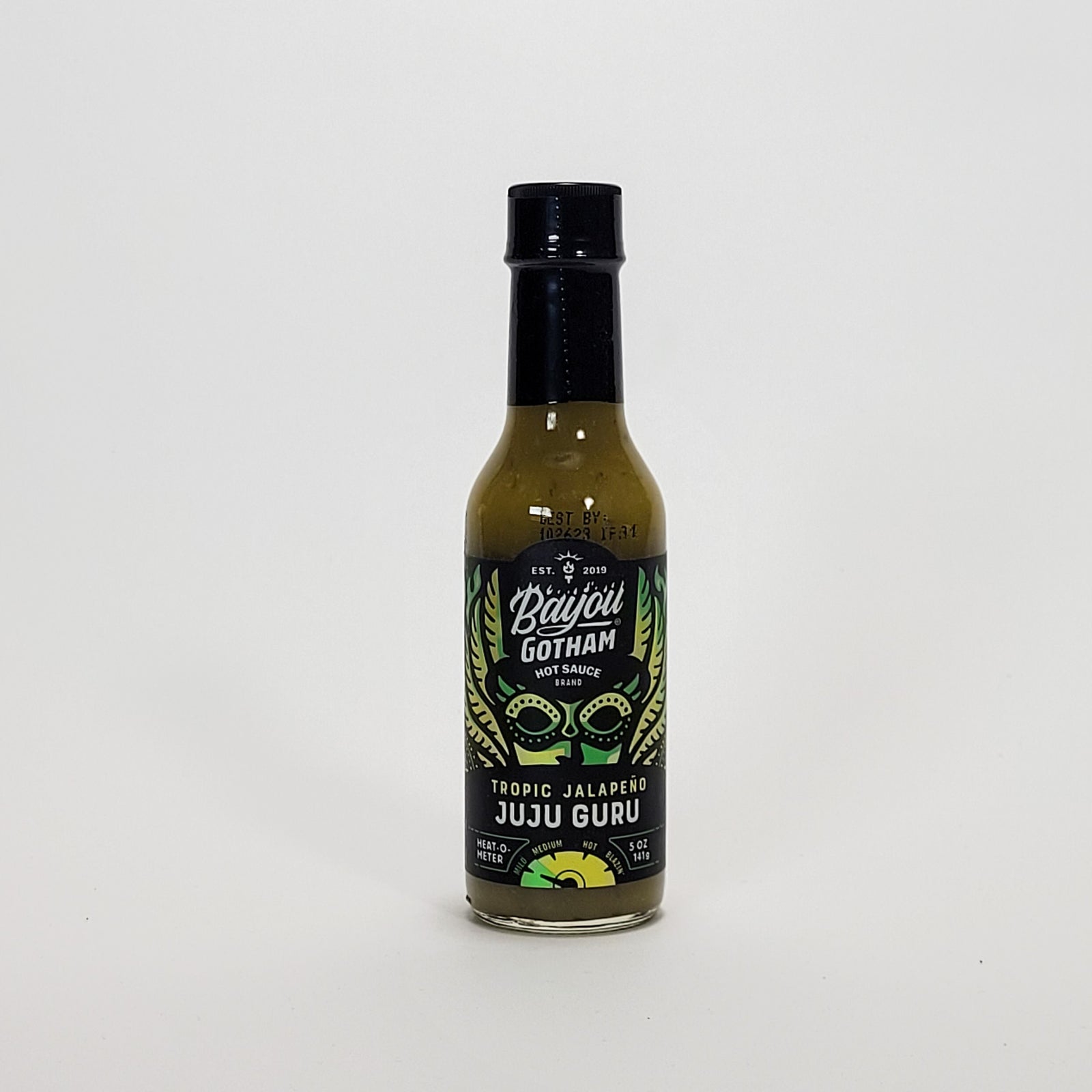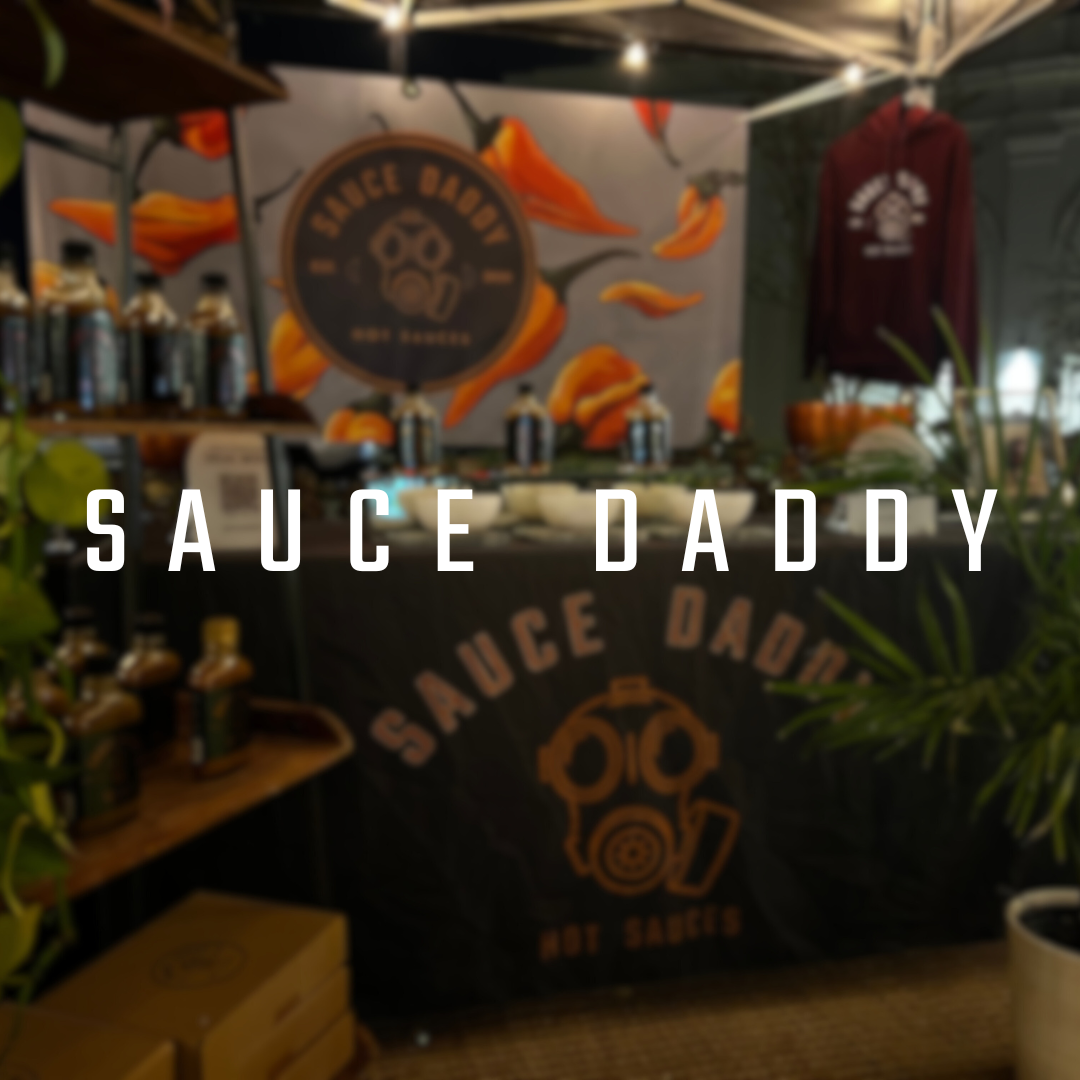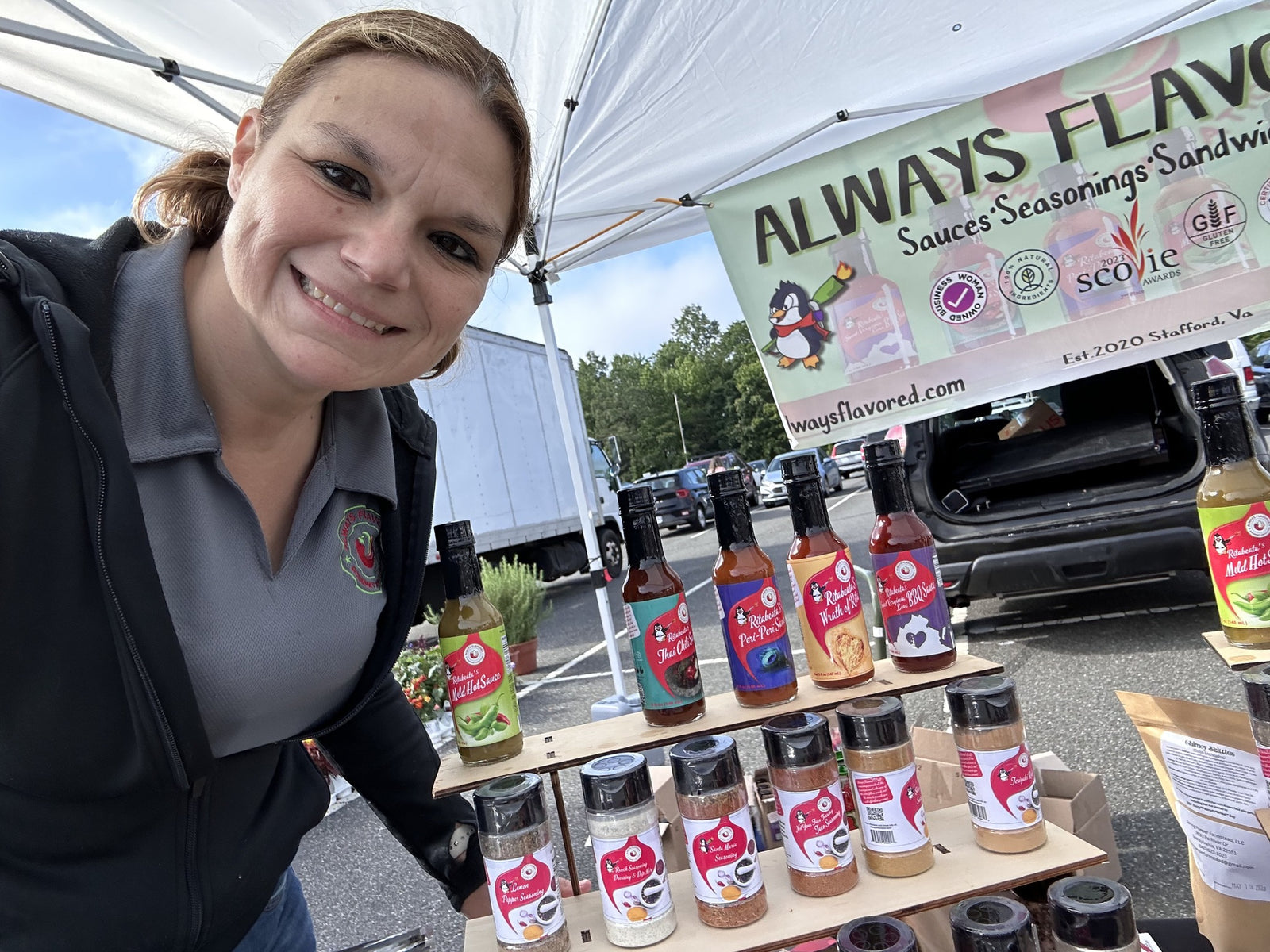Written by Bayou Gotham Owner Scotty Peppers
I am a certifiable fiery foods fanatic, but hot sauce and fresh homegrown produce has been a part of my life since the day I was born in New Orleans, Louisiana. My grandfather, Roger Baumer, was plant manager and brother to Baumer Foods founder Alvin Baumer. Together they laid the groundwork for turning Crystal®, Louisiana’s Pure Hot Sauce, into the empire it is today. The pungent fumes of cayenne emanating from the old plant location on Tulane Avenue overwhelmed my senses as a kid and, gratefully, still pervade.
My great uncle Alvin started Baumer Foods in his basement in 1923, where he made jellies and preserves while my grandfather Roger went on the road to sell it. They added hot sauce several years later once it started to become popular. When I was a kid in the 1980s, my grandpa Roger and his siblings would come over to our house to play cards, particularly a game called “Bourré” (boo-ray), which is the Cajun word for “stuffed”. My grandpa never came to our house empty-handed. He always brought with him a case of Crystal® hot sauce in one arm and a gallon bucket of ice cream in the other.
In 1944, my paternal grandparents, Mike and Virginia Bellina, established Bellina’s Grocery in Donaldsonville, a small sugar cane town in South Louisiana where Bayou Lafourche greets the Mississippi River. I spent many hot ’n’ humid bayou summers of the 1980’s stacking cans and tagging fruits and vegetables — keepin’ cool under the store’s AC. I still recall the scent of fresh basil, tomatoes, and cucumbers growing in the small garden behind the store. We lived in Donaldsonville for a couple of years before moving back to New Orleans. One of my earliest memories was my grandfather Mike planting a lemon tree in our backyard, which also had a sugar cane field behind it growing higher than our backyard fence.
So you could say it’s “in my blood”. I come from a lineage of hardworking and persevering immigrant farmers, humble grocers, and determined hot sauce makers. I think about them often. Their enduring legacies and entrepreneurial spirits have been passed down for generations in my family. I know they’d be very proud of my career accomplishments, so crafting hot sauce with fresh produce is my way of showing the world how proud I am of them. The first Bayou Gotham® Hot Sauce I developed is called “Bayou Bourré®,” which is a first-to-market hot sauce recipe that captures the essence of a Louisiana crawfish boil. It’s a direct tribute to my grandparents and my Louisiana heritage. It’s also a by-product of me missing out on too many crawfish seasons upon moving to NYC in my twenties.
The beginning of Scotty's hot sauce path
My hot sauce journey started about a year ago in 2018 and came at a creative crossroads for me. I graduated from Louisiana State University with a degree in Graphic Design. When I was 25, I moved to New York City in the spring of 2001 with Big Apple dreams. Later that year, I watched the events of 9/11 from my fire escape in Soho, just minutes away, and I told myself that I would be a part of the recovery of my newly adopted city. Two weeks later my grandfather Roger Baumer passed away, and nearly twenty years have passed since then. In that time span I’ve maintained a successful career as a creative director and rock musician. I launched my own branding agency, recorded three albums with my band F-Units, and I also found the time to get married along the way.
In January of 2019, my design business got very slow for the first time in ten years, coupled with my band ending a solid 15-year run of recording original music and performing live. I was at a creative crossroads with nothing new to cultivate. Later that month, my wife and I traveled to the Galapagos Islands where we encountered delicious and spicy Ecuadorian cuisine. It was then that I was struck with an epiphany regarding my heritage and my relationship with hot sauce and fresh produce. As New Orleans music legend, the late Dr. John, once said, “Life rolls on. If you don’t roll with it, you might as well roll under it.”
So after twenty years of launching and maintaining countless brands and products for my design clientele, I felt it was time to create a brand of my own showcasing my deep passion for Creole cooking, the global flavors of New York City, and my Louisiana hot sauce legacy. I began researching, planning, and crafting my recipes the minute I got back to NYC in the dead of winter — leaving my kitchen only to shop for more and more ingredients to experiment with. I was alive and creating again. For over six months, hands were scalded, eyes were burned, and many glass bottles were broken. The entire floor of our apartment building was smelling like the old Baumer Foods plant from my youth. I bet my neighbors loved that.
When Scotty decided to commercially make hot sauces for the community and beyond
Some of my early inspiration has come from my many branding and design partnerships with fearless entrepreneurs in the natural food and organic beverage space. Following their lead, I’ve become a champion for healthy and high-quality foods as both nourishment and medicine for the soul. I’ve come to learn that making food for another is an extremely gratifying way of sharing one’s experiences and way of living. It’s an extension of one’s self to another. It’s the cultivation of humanity at its very essence. My journey through handcrafting hot sauce is rooted in a genuine and unquenchable craving for spicy food, and how it can be presented to others. I’ve been very lucky to have lived in two vibrant cities, known for their mashups of cultures and cuisines. Bayou Gotham® Hot Sauce Brand came out of my knack for creating ways to get back to my New Orleans roots, literally and figuratively, while demonstrating the pride I have for my adopted home of New York City. My goal is to share these sauces, and thereby cultures, by offering people a small taste of what’s so far been a zest-filled life.
Some lessons learned while creating my sauce company, making hot sauce and scaling
Minutes after I first posted images and descriptions of my sauces on social media, people began to inquire about trying them and purchasing them. I was taken aback. This was totally unexpected, and I quickly realized there was a real opportunity for my recipes in an already saturated marketplace. Being that I’m the type of person that never goes at anything half-assed, I immediately formed an LLC and began the proper research into FDA requirements through Cornell University’s website — immersing myself as much as I could into what goes into starting a business of this nature. It’s pretty daunting to say the least.
One rookie mistake was that I would ship four different bottles of hot sauce to everyone and anyone that would ask me for a sample, at my own expense, which wasn’t very practical to say the least. I was losing a lot of time and money buying ingredients, cooking the sauces, and shipping bottles — giving away free sauce. I just wanted to get the word out, and I wasn’t even sure if it was legal to do so. Since I wasn’t selling to anyone, I figured things would be OK. Even still, while I practiced food safety, it was always a concern. I don’t recommend doing this, and I no longer do it. Moreover, I had no idea how to properly ship glass bottles of sauce. I got a lot of pictures sent back to me of broken glass covered in sauce. I’m sure every craft sauce maker has experienced these very same mistakes early on.
I was quickly confronted with the notion of leaving behind a 20+ year career as a creative director in order to become a full-time hot sauce chef working out of a commercial kitchen. That’s a really big change that neither I, nor my wife, was mentally or financially prepared for. So after reading countless threads on Reddit, attending a few expos, and speaking with my mentors in the industry, it became clear to me that finding a reputable copacker partner who believed in my recipes and my brand would be the route to take.
Going through R&D with the copacker was an exciting experience initially, but it became a quick reality check when it comes to scaling up recipes. Since my I'm a visual designer by trade, I had spent a lot of effort crafting and honing my sauce recipes to have vibrant colors and an ideal texture / consistency along with great taste. I went in knowing there would be 'some' differences, but I don't think I was mentally prepared for just how different it could be. Figuring out a compromise was very stressful given how much work I had already put into my homemade, handcrafted recipes. It took a little while, but I'm very happy with where things are at, but there may even be some subtle tweaks when we go into full production.
I’m looking forward to our first production run in the coming months after a successful funding of my Kickstarter campaign, which beings on January 6th, 2020.
Some favorite memories along our hot sauce journey
I mentioned the late music legend Mac Rebennack (aka Dr. John) for a reason. In 2007, I was invited to see him perform at BB Kings in Times Square. This was not long after Hurricane Katrina devastated our hometown, and he sure had a lot to say about it on stage that night. My friend who brought me to the show later revealed that she used to be his personal assistant, so she brought me backstage to meet him. I was thrilled but nervous as all get out. After a warm embrace with Mac, my friend turned to introduce me, mentioning I was from New Orleans and that I “went to his school”. Off the bat, Mac started sizing me up. I could instantly tell he wasn’t one for small talk — he only had time for making real connections. He asked, “Aw yeah? Where you go to school?” I responded, “I went to Jesuit,” to which he replied, “Shee-it. I was in dat school for about 5 minutes.” Yikes. When I get nervous, I awkwardly attempt to be light-hearted, so I quipped, “Well… I guess they still take credit for those 5 minutes.” Mac looked me straight in the eyes, leaned in, and revealed, “Dey ain’t give me no fuckin’ credit.” I froze stiff, desperately trying to change the subject. I recalled a magazine article I read as a kid about Dr. John loving all things hot sauce, so I abruptly blurted out, “You know Crystal Hot Sauce?”. He cocked his eyebrow and said, “What are you… a Baumer?” Before I could reply that indeed I was, his eyes lit up, and he inquisitively replied, “Dey used to make a green sawce… whatever happened ta dat green sawce?”
I later learned from my cousin, Alvin Jr., that Baumer Foods never made a green sauce under the Crystal® label. Still, the hot sauce connection I had with Dr. John was spontaneous, real, and truly inspiring. I’ll never forget it. I set out to make a green sauce for Mac to enjoy as a tribute to his legacy as Dr. John the Nite Tripper. My sauce is called Juju Guru Tropic Jalapeño Green Sauce. Sadly, a few weeks after I reached out to his management company to share it with him, he passed away. Whenever I craft my bayou-themed recipes, I blast songs from his albums Desitively Bonarroo, Dr. John’s Gumbo, and Gris-Gris to get into the right frame of mind.
The hot sauce scene in New Orleans and NYC
I recently learned that all of my immigrant ancestors entered this country from one of two places, New York Harbor (Ellis Island) and The Port of New Orleans. Perhaps I was destined to call both places home. I currently live in NYC, but I return to New Orleans quite a bit, hence “Bayou Gotham”. The two cities could not be more polarizing when it comes to the hot sauce landscape. Like the American public at large, most people in New Orleans have a very generalized view of the hot sauce landscape, often clumping hot sauce into two categories. The first category consists of all the big brands, led primarily by Crystal and Tabasco. The second category is the gazillion novelty sauces one would find inside the tourist traps of the French Quarter. These sauces usually have irreverent names and contain preservatives you cannot spell much less pronounce. They also, most often than not, tout excruciatingly painful levels of capsaicin, the active component which gives chili peppers their heat.
But in NYC, there’s an obvious shift toward small batch handcrafted sauce making. This is apparent through the popularity of the Heatonist stores, the massive turnouts for the NYC Hot Sauce Expo, and First We Feast’s YouTube channel and hit show Hot Ones. My favorite place to shop for hot sauce and get my ingredients is Kalustyan’s in Murray Hill. On any given day, I may have more than 20 bottles of craft hot sauces in my fridge, not counting my own. Like other makers, I am a champion for everyone in the business — I see things through the lens of a brother and sisterhood, rather than as a competition. Some sauces currently on tap in my fridge: Bravado’s Crimson Special Reserve, Culley’s Brutality Hot Sauce, Tabasco’s Scorpion Pepper, PeppaJoy (from Turks & Caicos), Reaper Squeezin’s by Puckerbutt, Nando’s Peri-Peri Sauce, Crystal® (always), Dawson’s Sichuan Ghost Pepper Sauce, and my favorite two sauces from another NYC maker, Erica Diehl, known as Queen Majesty.
Queen Majesty’s sauces are my favorite handcrafted sauces here in NYC. I lived in the East Village for over a decade where she was a reggae DJ at East Village Radio. Her hot sauces showcase her love of spicy cuisine, reggae, and the obvious Caribbean heritage tied to it. She’s also a graphic designer, like myself, which shows in her branding and her attention to detail while crafting her sauces. They tell a story and offer a glimpse of who she is, what she loves, and how she shares that through food. I admire her style, background, and her work ethic. Queen Majesty sauces are truly remarkable.
What makes us Bayou Gotham Hot Sauce:
For me personally, when it comes to consuming hot sauce, I’ll take whatever is available. I was exclusively raised on Crystal (it’s in my blood), yet I still use Tabasco on specific dishes. My tolerance has evolved tenfold and I really love using super hots on my food. I believe all craft hot sauces have a time, place, and function. What makes my sauces unique is that they are a nod to the old-school Louisiana hot sauce tradition, but they also stand out in the world of handcrafted sauces as well, and here is why…
The cuisines of Louisiana and of New York City are global cuisines. Viet-Cajun. Creole-Italian. Caribbean-Soul. Indo-Chinese. One doesn’t need a lesson in American history to know that New Orleans and New York City are among the oldest, most ethnically diverse cities in the United States. A lot of blood was shed to get us where we are today, but our taste buds have come out on the winning end. Bayou Gotham® sauces celebrate these unique culinary fusions that only could have occurred in mashed-up societies of creed, class, and ethnicity. For instance, there’s a specific area in the Lower East Side of Manhattan that collides with Chinatown. The ensuing result is the “Chinese Hispanic Grocery” on the corner of Broome & Eldridge Streets. I used to find that hilarious, but after 20 years of living in NYC, I’ve come to recognize that there’s nothing strange about it. My Bayou Gotham Chinatown Warrior hot sauce fuses red habanero and garlic, ingredients used predominantly in Latin cuisine, with the tongue numbing vibration of red Sichuan peppercorn mixed with black Chinese rice vinegar.
But Bayou Gotham Hot Sauce Brand is much more than a tale of two cities. It’s a culinary journey filled with ‘heat and soul’. As a point of differentiation, I use ingredients far more exotic than the major hot sauce brands. Moreover, my sauces also stand out from other handcraft hot sauces where the trend has been to pair a super hot pepper like reaper or ghost with something sweet like mango or blueberries. That isn’t a knock — I love those sauces — but I take an unconventional approach in crafting my recipes. They have to exist for a reason. I pair varying peppers from various regions with superfood ingredients, and then concoct a unique representation of a specific place or heritage. For example, my Bayou Gotham® Flambeau Fiya Caribbean Creole Hot Sauce pays homage to one of the most revered Carnival traditions in New Orleans. Long before the electrical spectacle of the modern Mardi Gras parade, generations of torchbearers have lit the way for revelers lost in the dark. Many of today’s flambeaux are descended from long lines of carriers, some going back to the days of slavery. Today Flambeau is viewed as performance art due to the furious strutting and wild gyrations common to experienced carriers. Moreover, New Orleans’ evolution of Carnival (Mardi Gras) owes much to its tropic influences. Flambeau Fiya honors that tradition as a sweet heat balancing act of scotch bonnet and cayenne peppers paired with exotic island “flare”. It’s exquisite with pork and rice dishes, seafood, chicken, and salads. My goal is to offer a piece of myself and my heritage, and I’m constantly aiming to provide a crash course in colorful history and culinary anthropology — but as a spicy condiment!
Advice for hobbyists that are interested in starting or starting a hot sauce company
My advice to hobbyists who are looking to start a hot sauce company is to have a “vision”. Once you take the leap, you’re obviously creating much more than hot sauce, you are building a business. That means you need a “brand”. A brand is more than your name, your logo, and your labels. You’ll need to strategize your brand’s mission and purpose. You’ll need a business plan. What are your guiding principles? Who is your audience? How do you position yourself in the marketplace? Finding your voice amongst a swell of significant competition can be challenging, but it’s a necessary component to success in any industry, especially in food and beverage.
Your brand is experienced by your consumers and the public in what they see, hear, read, and personally encounter about you and your products. So I would encourage them to move slowly to figure out their story and learn about the industry. Mistakes can be very costly particularly when it comes to the tricky process of trademarking your company and its product names. I started out as “Scotty Peppers Hot Sauce Co.”, but ultimately pivoted to Bayou Gotham® once I discovered a handful of other “Scotty” brands already firmly established throughout the hot sauce industry. I was able to make the change before anyone really became aware of my brand. I’ve found so many obstacles to hurdle along the way, every day has been a dance of two steps forward and one step back. Being that I am new to this as a business, I am quite certain there will be even more challenges on the horizon. I look forward to turning my future failures into new opportunities for undaunted possibility.
